Are you feeling like your daily routine lacks a sprinkle of excitement? Maybe it’s time to shake things up by exploring new cultures like the Italian Culture and Lifestyle. Italian culture, known for its rich history and vibrant Lifestyle, might just be the fresh take you’re looking for.
From mouth-watering Italian food to iconic fashion, Italy offers a unique way of life that many dream about.
In fact, Italy is the fifth most visited country in the world. People come from far and wide not just for the leaning tower of Pisa or delicious plates of spaghetti but to experience the Italian way of life firsthand.
This article will guide you through what makes Italian culture so special—from family dynamics to their love affair with coffee—providing actionable insights on how you can incorporate some aspects into your own life.
Get ready to be inspired!
Key Takeaways
- Italian families are close-knit, often living near or with each other this is a strong part making the Italian Culture and Lifestyle. They value meals together and respect for elders.
- Art, music, and architecture are central to Italian culture and Lifestyle. Famous works by Michelangelo and operas by Verdi show Italy’s artistic influence.
- Food in Italy focuses on fresh, seasonal ingredients. Meals like pasta and risotto highlight local flavors. Coffee and aperitivo rituals bring joy to daily life.
- Italian fashion leads globally with designers like Ferré setting trends. Innovation blends tradition with modern styles in both clothing and design.
- Community is important in Italy. Leisure activities like the passeggiata evening stroll strengthen social ties among friends and family.
SHOP NOW ZAZZLE - CLICK BELOW
Key Aspects of Italian Culture and Lifestyle
Italian culture and lifestyle are renowned for their warmth, vibrancy, and deep-rooted traditions, making the country truly unique. Several core elements define what it means to live “all’italiana,” blending history, art, family, and a zest for life into a distinctive national identity.
Family as the Cornerstone
Family is the foundation of Italian society and of course Italian culture and lifestyle, extending beyond the nuclear unit to include a wide network of relatives and close friends. Multigenerational households are common, and elders are highly respected, often serving as the keepers of tradition and wisdom.
Regular family gatherings, especially around meals, are central to maintaining these strong bonds. The concept of la famiglia also encompasses close friends, reflecting a broader sense of belonging and support.
Celebration of Food and Shared Meals
Food is much more than sustenance in Italy—it is a ritual and a social event. Meals are leisurely, often involving several courses, and are meant to be savored with family and friends.
Italian cuisine emphasizes fresh, local, and seasonal ingredients, with each region boasting its own specialties. Simplicity and quality are prized, and there is a national respect for culinary tradition.
The aperitivo (pre-dinner drinks and snacks) and the passeggiata (evening stroll) are daily rituals that foster community and relaxation.
Art, Beauty, and Aesthetics
Italy’s deep connection to art, architecture, and music is evident in its cities, museums, and everyday life. Italians have a strong appreciation for beauty in all its forms, from Renaissance masterpieces to stylish clothing and elegant table settings.
The concept of la bella figura—making a good impression through appearance, manners, and behavior—is a guiding principle in Italian society.
Local Pride and Regional Diversity
While Italians share a strong national identity, local pride (campanilismo) is equally significant. Each region, city, and even village celebrates its unique history, dialect, cuisine, and festivals, fostering a healthy sense of rivalry and diversity.
This localism is reflected in the passionate support for local sports teams, regional specialties, and traditional events
Sociability, Communication, and Hospitality
Italians are known for their sociable, expressive, and sometimes loud communication style, often using gestures to emphasize their points.
Hospitality is a hallmark of Italian culture, with guests welcomed warmly into homes and communities.
Conversation is valued, whether in bustling piazzas, over coffee at a bar, or during long dinners.
Work-Life Balance and the “Dolce Vita”
Italians embrace a philosophy of enjoying life’s pleasures, known as la dolce vita or dolce far niente (“the sweetness of doing nothing”).
There is a strong emphasis on balancing work with leisure, taking time for rest, socializing, and appreciating the moment.
Extended lunch breaks, frequent holidays, and a general “slow living” approach contribute to high quality of life and longevity.
Fashion, Style, and Presentation
Italy is a global capital of fashion and design, and Italians take pride in dressing well and presenting themselves with elegance, regardless of the occasion.
Personal style is seen as a sign of self-respect and respect for others.
Tradition, Religion, and Values
Catholicism has historically shaped Italian culture, influencing holidays, family traditions, and moral values.
Core values include honesty, trust, respect for elders, and a sense of community responsibility.
Appreciation for the Simple Pleasures
Italians excel at finding joy in the small things—sharing a coffee, admiring a sunset, or strolling through a historic piazza.
The culture encourages living in the present and savoring each moment
Key Aspects of Italian Culture and Lifestyle
| Aspect | Description |
|---|---|
| Family | Central to life; strong multigenerational bonds and respect for elders |
| Food & Meals | Social, leisurely, fresh, and local; meals are important family and community events |
| Art & Beauty | Deep appreciation for art, music, architecture, and aesthetics in daily life |
| Local & National Pride | Strong regional identities alongside national unity |
| Sociability & Hospitality | Warm, expressive, and welcoming communication and social life |
| Dolce Vita & Work-Life Balance | Emphasis on enjoying life, relaxation, and balancing work with leisure |
| Fashion & Style | Pride in personal appearance and elegant presentation |
| Tradition & Values | Catholic heritage, honesty, trust, and respect for community |
| Simple Pleasures | Savoring everyday moments and living in the present |
Italy’s uniqueness lies in how these elements blend to form Italian culture and lifestyle. Where tradition meets innovation, and where the pleasures of daily life are celebrated with passion and style. This vibrant, people-centered way of living continues to captivate and inspire the world
How Italians Balance Work, Leisure, and Personal Enjoyment
Italians are widely recognized for their ability to blend work, leisure, and personal enjoyment, creating a lifestyle that is both productive and deeply fulfilling. This balance is not just a cultural ideal but is reflected in daily routines, workplace norms, and national policies.
Work Hours and Structure
The standard working week in Italy is 40 hours, with a legal maximum of 48 hours including overtime. However, the average working week is closer to 36 hours, and labor laws strictly regulate overtime, ensuring most employees are not overburdened.
Italians enjoy at least four weeks of paid holiday annually, plus 12 public holidays, and the tradition of Ferragosto in August, when many businesses close for a summer break.
Many businesses and shops close for a long midday break (riposo), typically from 1pm to 3:30pm, allowing workers to go home, enjoy a leisurely lunch, and rest before returning to work.
Cultural Attitudes and Daily Practices
Italian culture strongly emphasizes la dolce vita—the sweet life—prioritizing personal enjoyment, family time, and social connections over relentless work.
Full-time workers in Italy devote about 16.5 hours per day to personal care and leisure, the highest among OECD countries, highlighting a national focus on well-being and downtime.
Meals are a central part of daily life, often enjoyed slowly with family or friends, reinforcing social bonds and providing regular opportunities to disconnect from work.
Leisure and Social Life
Italians actively seek pleasure in everyday moments, whether through leisurely strolls (passeggiata), outdoor activities, or simply enjoying a coffee at a local café.
The importance of relationships is reflected in how Italians prioritize time with loved ones, often structuring their days to ensure regular family meals and social gatherings.
Workplace Flexibility and Well-being
Italy’s labor system, supported by strong unions and social security, ensures workers have access to benefits like paid parental leave and healthcare, contributing to reduced stress and greater life satisfaction.
While remote work is less common than in some countries, the COVID-19 pandemic has increased flexible working options, helping some Italians better reconcile work and family life.
Despite these strengths, about 30% of Italians report difficulties in fully disconnecting from work, especially when working remotely, indicating ongoing challenges in achieving perfect balance.
Seasonal and Regional Variations
The balance between work and leisure can vary by region and sector. For example, Milan’s work culture is more intense, resembling that of major global cities, while smaller towns and southern regions may offer a more relaxed pace.
The summer holiday period, especially in August, is a nationwide pause, with many Italians heading to the coast or countryside, underscoring the cultural commitment to rest and rejuvenation
Italian Work-Life Balance
| Aspect | Italian Approach |
|---|---|
| Working Hours | 36–40 hours/week; strict regulation of overtime |
| Paid Holidays | 4 weeks/year + 12 public holidays |
| Midday Break (riposo) | 1–2 hours for lunch, rest, and family time |
| Leisure & Personal Care | 16.5 hours/day on average (highest in OECD) |
| Social Life | Regular family meals, social gatherings, and community events |
| Workplace Flexibility | Growing remote work options, but not universal |
| Summer Break (Ferragosto) | Widespread business closures, focus on rest and travel |
| Cultural Values | Emphasis on la dolce vita, well-being, and living in the present |
Italians achieve work-life balance through a combination of regulated work hours, cultural norms that prioritize leisure and relationships, and daily rituals that encourage living fully in the moment. This approach, deeply embedded in both policy and tradition, allows Italians to enjoy one of the best work-life balances in the world
Italian Culture and Lifestyle
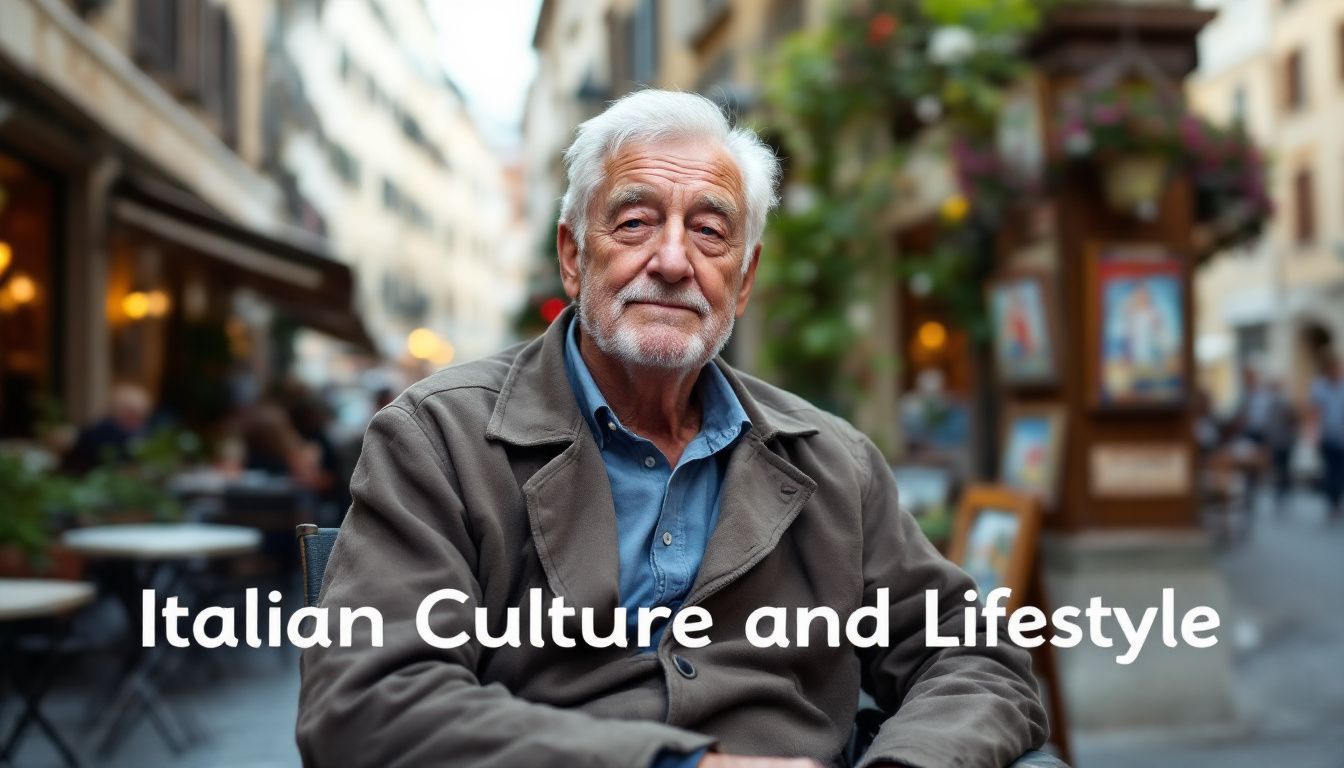
Italian culture and lifestyle runs deep, shaped by history and geography. At its heart are close-knit families and a proud artistic past from painting to building design.
Family Dynamics and Social Structure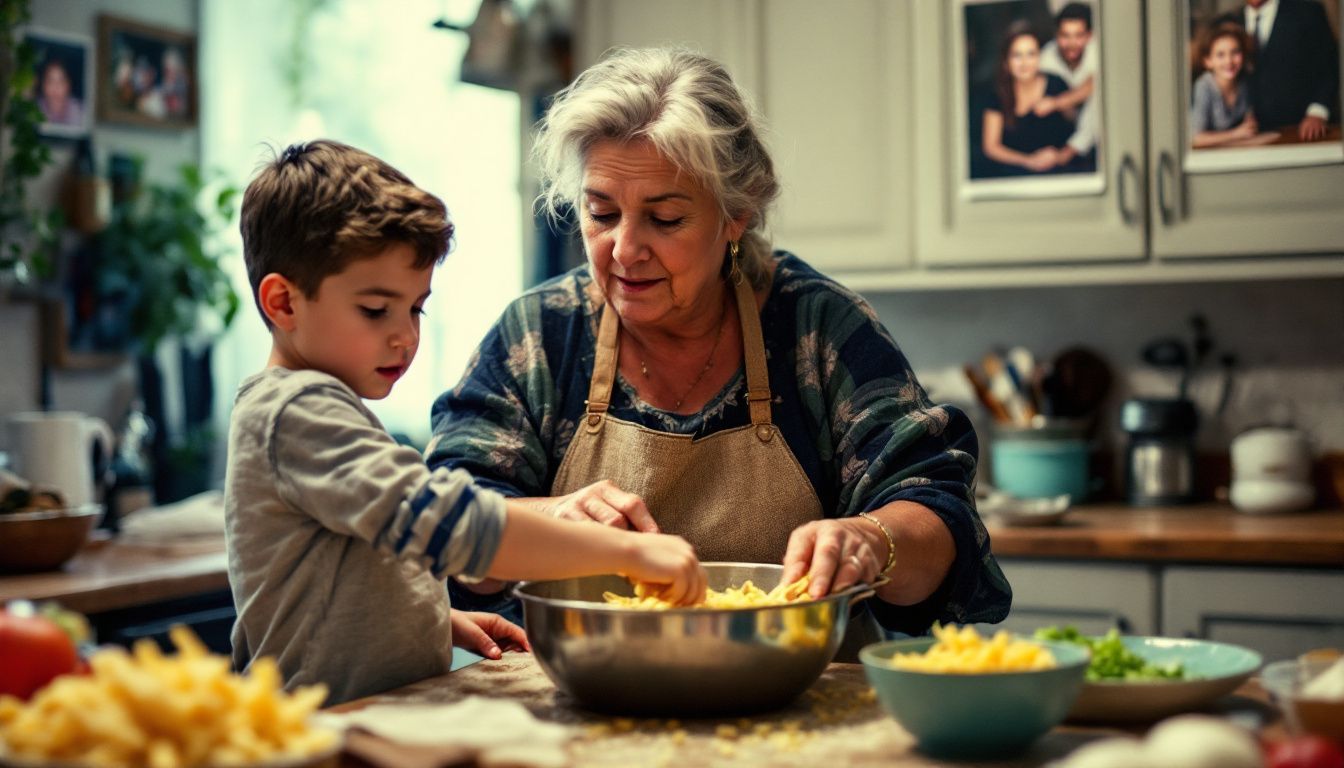
Family in Italy is the most important part of life. Large families often live close by or even under one roof. They share meals, celebrate traditions together, and support each other.
Grandparents play a key role, helping with kids and passing down stories and values.
In Italian culture, respect for elders is big. Families gather on Sundays for long lunches that last hours. These meals strengthen bonds between family members. Friends are also seen as part of the family in Italy.
Kids grow up learning from both their parents and grandparents about Italian cooking, language, and customs. This way, they keep their cultural roots strong while moving forward in life.
Artistic Heritage: Art, Music, and Architecture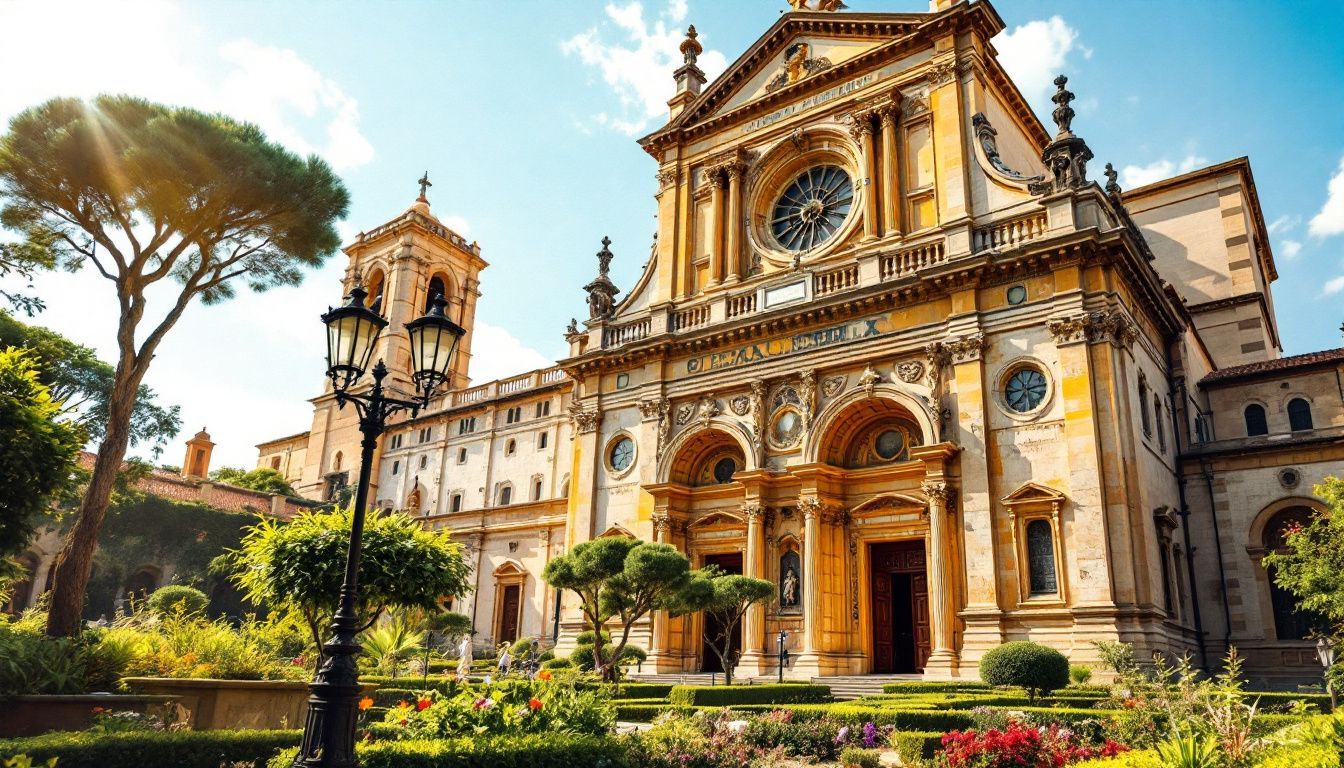
Italian culture and lifestyle shines brightly through its art, music, and architecture. Great masters like Michelangelo created stunning works that still draw crowds today. The Sistine Chapel in Rome is one prime example of this brilliance.
It features amazing frescoes that tell stories from the Bible. People visit to admire not just the artwork but also the beauty of its design.
Italian Music
Music plays a vital role in Italian life, too. From operas to folk songs, Italy offers rich sounds that connect people across generations. Composers like Verdi and Puccini are renowned for their powerful operas which captivate audiences worldwide.
Cities host numerous festivals celebrating both traditional and modern music styles, showing how deeply music is woven into Italian culture.
Architecture tells tales of history as well. The Baroque style adorns many buildings with grandeur and detail—a true reflection of Italy’s artistic flair over centuries. Renaissance structures bring visitors back to an age of creativity and innovation that changed the world forever…
Next comes a look at the Italian approach to food, which is just as vibrant and essential to their lifestyle.
Religion, Traditions, and the Italian Language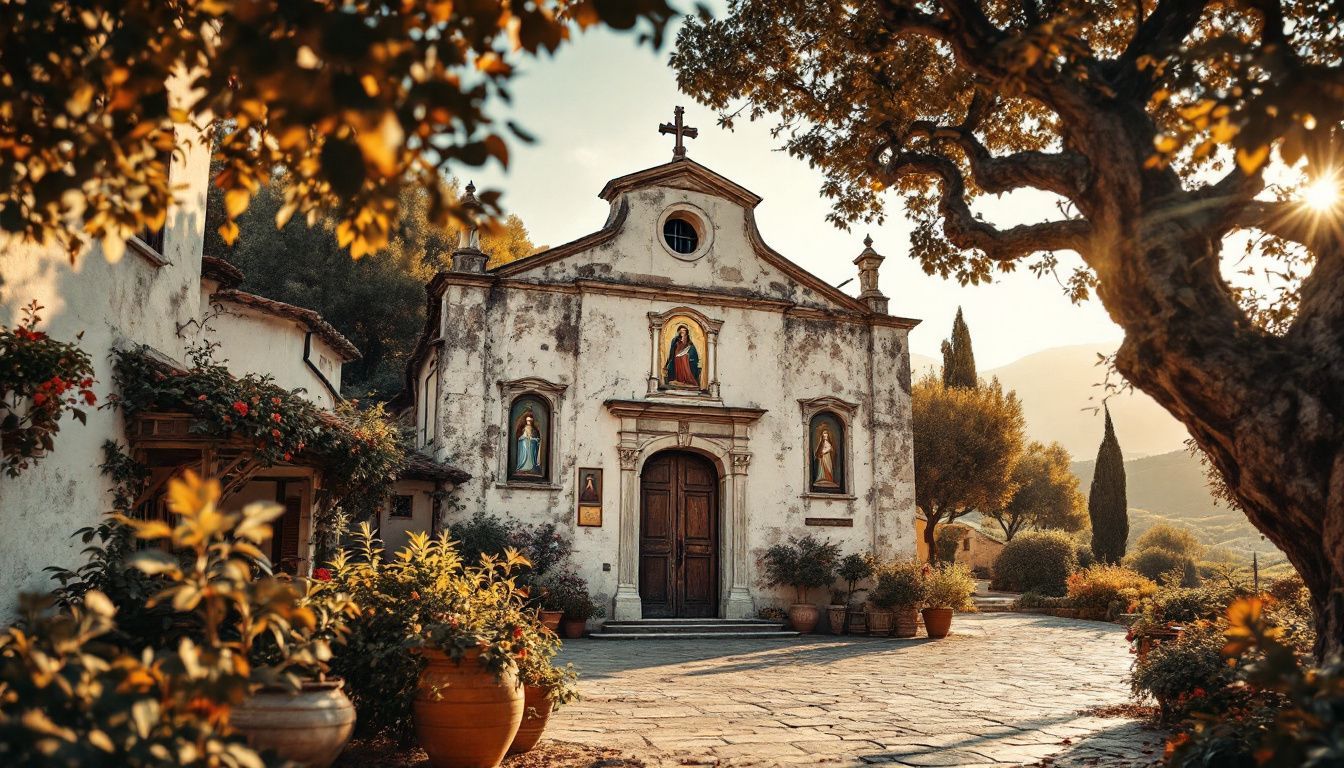
Religion plays a big role in Italian life. Most Italians are Christian, with many following Catholic traditions. Major holidays like Christmas and Easter bring families together. These events include special meals and festive gatherings.
Traditions in Italian culture and lifestyle are deep-rooted, passed down through generations.
The Italian language is rich and beautiful. It reflects the country’s history and culture. Many people learn it to connect with Italy’s art, music, and cuisine. Foods like pizza, lasagna, and tiramisu are tied closely to regional dialects too.
The way Italians speak shows their passion for family and friends, expressing warmth through body language and lively conversations.
The Italian Approach to Food
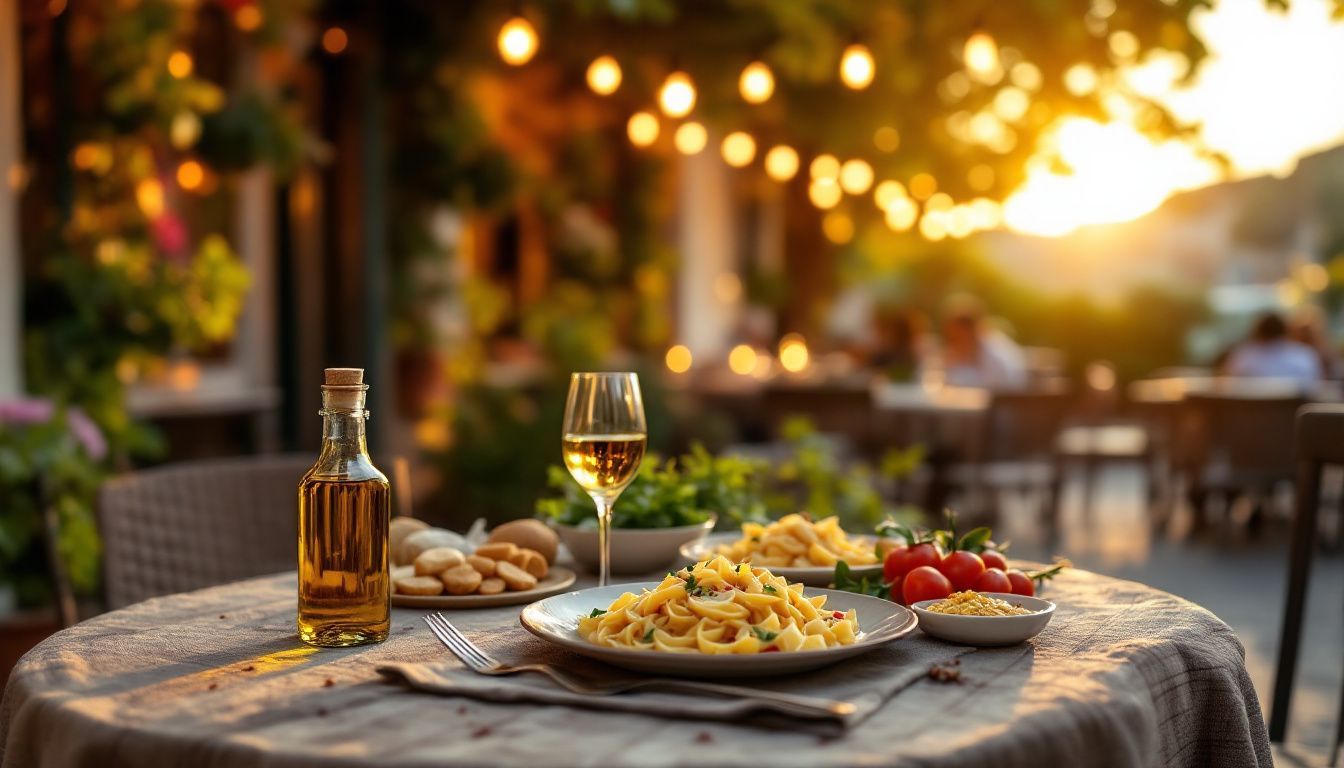
Food in Italy is a big deal and a big part of Italian culture and lifestyle. Fresh, seasonal ingredients are key to great meals. Italians cherish their mealtimes. Lunch often takes center stage, bringing family and friends together.
Coffee and aperitivo are daily rituals that add joy to life. Each meal highlights flavors like olive oil, pasta dishes, or risotto that define the cuisine of this vibrant culture. Desserts like cake and gelato cap off evenings with sweetness.
Emphasis on Fresh, Seasonal Ingredients
Italy’s food culture thrives on fresh, seasonal ingredients. This means Italians choose what is ripe and ready to eat. Markets overflow with fruits and vegetables that show off the local bounty.
People often shop daily for what they will cook that night. They believe this makes their meals taste better. It connects them to their land.
Italian cuisine includes a wide array of dishes like pasta, risotto, and soups. Each region has its own specialties due to different climates and harvests. In Northern Italy, you might find creamy polenta or rich risottos made with mushrooms.
Southern regions often use fresh tomatoes and olive oil in vibrant sauces for pasta dishes like Bolognese or pesto sauce.
Eating seasonal allows locals to enjoy the best flavors while supporting local farmers. Meals reflect the Mediterranean diet’s focus on healthy fats and fresh produce—think eggplant, sausages, or salads bursting with color! The Italian way emphasizes family dining too; mealtime is sacred—a time for togetherness over delicious food prepared with love.
The Ritual of Coffee and Aperitivo
Coffee and aperitivo are key parts of Italian daily life. Italians love their coffee, usually enjoying a quick espresso at the bar. Coffee is often taken standing up—and it’s common to see lively conversations happening around the counter.
This social part of drinking coffee makes it more than just getting caffeine; it’s about connection.
Aperitivo is another cherished ritual in Italy. It typically happens before dinner and encourages relaxation with friends or family. The drink can be anything from a spritz to wine, paired with small snacks like olives or chips.
This time helps build relationships while savoring good food and drinks together—showcasing the importance of community in Italian culture. So, whether sipping an espresso or enjoying an aperitivo, these moments reflect the vibrant Italian lifestyle filled with joy and warmth.
Fashion and Design: Icons of Italian Style
![]() Italian fashion shines bright on the global stage. Designers from Milan to Florence use bold colors, fine fabrics, and innovative styles that set trends everywhere.
Italian fashion shines bright on the global stage. Designers from Milan to Florence use bold colors, fine fabrics, and innovative styles that set trends everywhere.
Influence on Global Fashion
Italy has a powerful influence on global fashion. Designers like Ferré have shaped styles worldwide. Italian fashion is known for its elegance and quality. Cities like Milan host major fashion events, attracting talent from all over the globe.
These shows set trends that others follow.
The country’s rich culture inspires designers daily. From art to architecture, creativity flows in Italy’s streets. This spirit leads to innovative designs in clothing and accessories.
Italian brands often emphasize craftsmanship and unique materials, making their items highly sought after. Fashion lovers cherish these pieces as symbols of style and sophistication.
Innovation in Modern Design
Italy shines in fashion and design. It has a strong influence on global styles. Cities like Milan lead in creativity. Designers often use fresh ideas, mixing tradition with modern flair.
This blend keeps Italian style alive and exciting.
Italian design is known for its elegance and functionality. Brands like Gucci and Prada showcase fine craftsmanship. They create items people love to wear every day or display in their homes.
Innovations also appear in furniture designs, where comfort meets artful shapes.
With a rich history influenced by arts and culture, Italy pushes boundaries forward. From classic looks to bold new trends, it captivates many around the globe. The warm spirit of family gatherings at cafes adds life to this creative scene too—where friends share laughs over delicious Italian meals while discussing the latest designs!
Daily Life in Italy
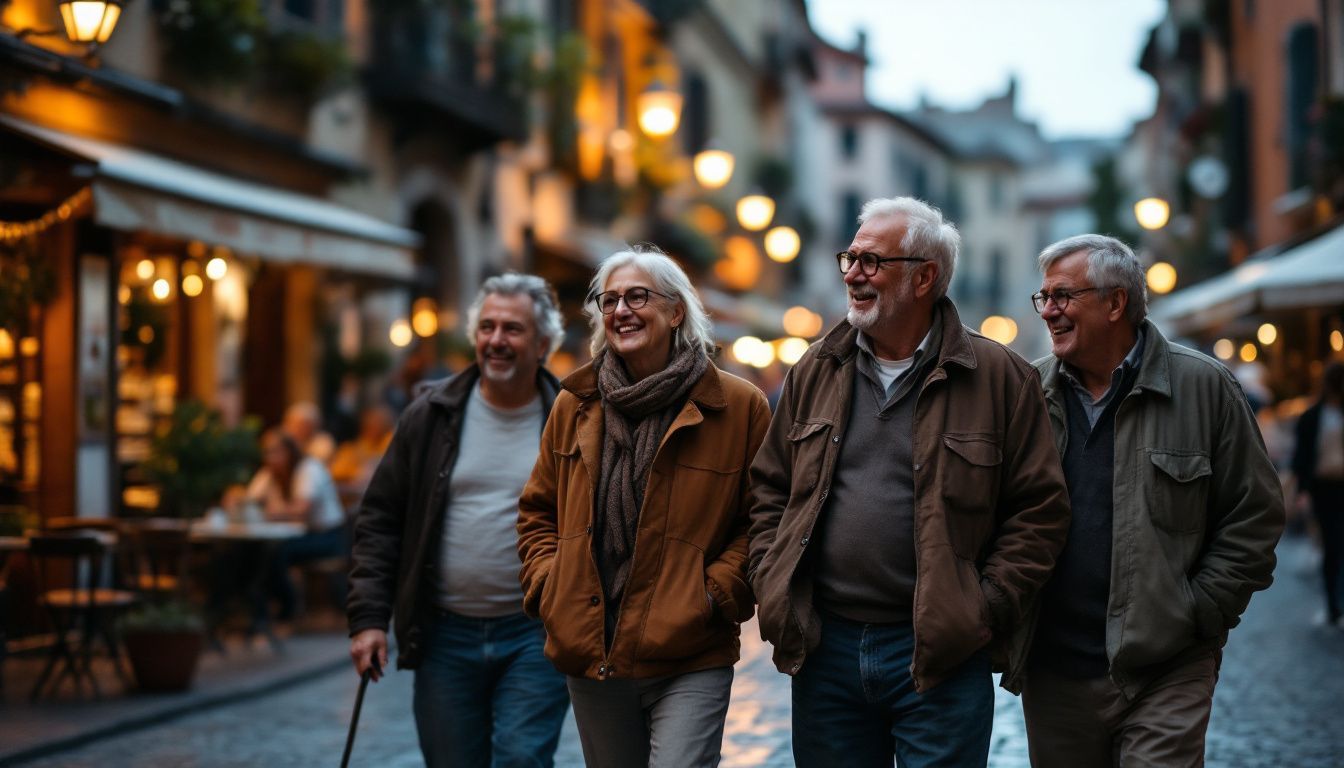
In Italy, daily life is rich with traditions and strong connections. People enjoy leisure time and stroll together in the evenings, sharing stories with family and friends.
The Role of Leisure and the Passeggiata in Italian culture and lifestyle
Leisure plays a big role in Italian culture and lifestyle. Italians value their free time and cherish moments with family and friends. One popular tradition is the passeggiata, a leisurely stroll often taken in the evenings.
People walk through town squares, chatting and enjoying each other’s company. This practice reflects Italy’s strong community ties.
The focus on leisure also supports health and well-being. Italians follow the Mediterranean diet, rich in fresh fruits, vegetables, and healthy fats. Meals are not rushed; lunchtime can turn into a long gathering over delicious dishes like pasta or gnocchi.
In this way, both food and leisure strengthen social bonds while celebrating life’s simple pleasures.
The Importance of Community and Social Interaction
Community and social interaction are vital in Italian life. Italians thrive on spending time with family and friends. They greet each other with kisses on the cheeks, creating a warmth that strengthens bonds.
Social gatherings often revolve around food, like pasta or potato dumplings. Sharing meals is more than just eating; it’s about connecting.
Leisure activities also play a key role. People enjoy the passeggiata, an evening stroll where conversations flow freely. This fosters a sense of belonging among neighbors and friends alike.
In Italy, community ties help shape identity and promote joy in everyday life—making it truly special!
Why is enjoying food and outdoor activities central to Italian culture and lifestyle?
Enjoying food and outdoor activities is central to Italian personal enjoyment because both are deeply woven into the fabric of Italian culture, reflecting values of pleasure, connection, and appreciation for life’s simple joys.
Food as Pleasure, Connection, and Identity
In Italy, food is much more than nourishment; it is a ritual and a celebration of life. Meals are moments to slow down, savor flavors, and connect with family and friends. The act of eating together is seen as one of the most significant daily highlights, providing an opportunity to socialize, share stories, and reinforce family and community bonds.
Italian cuisine is renowned for its quality ingredients, simplicity, and regional diversity, but its true magic lies in how food brings people together and transmits cultural values across generations. The Mediterranean diet, rooted in Italian tradition, emphasizes conviviality, hospitality, and respect for the land, making meals a cornerstone of well-being and happiness.
Food traditions are fiercely protected and celebrated, with family gatherings, festivals, and even everyday meals becoming occasions to express passion, pride, and joy.
Outdoor Activities and Connection to Nature
Italians have a strong connection to the outdoors, which is reflected in their love for activities such as hiking, cycling, swimming, and participating in outdoor festivals. Italy’s diverse landscapes—from the Alps and Apennines to its lakes and Mediterranean coastline—offer endless opportunities for recreation and adventure, promoting physical well-being and mental relaxation.
Outdoor activities are often social events, whether it’s the evening passeggiata (stroll) through town, a family hike, or community festivals held in piazzas and parks. These traditions foster a sense of belonging, create lasting memories, and allow Italians to enjoy the beauty of their surroundings while strengthening community ties.
The Italian emphasis on work-life balance means that leisure and time spent outdoors are highly valued, contributing to overall happiness and a healthy lifestyle.
A Philosophy of Enjoyment
Both food and outdoor activities embody the Italian philosophy of la dolce vita—the sweet life—which prioritizes savoring the moment, enjoying good company, and finding joy in everyday experiences. Italians believe in working to live, not living to work, and this attitude is evident in their dedication to making time for meals, nature, and social connection.
Ultimately, enjoying food and the outdoors is not just about pleasure, but about nurturing relationships, celebrating tradition, and living life with enthusiasm and gratitude.
In summary, food and outdoor activities are at the heart of Italian personal enjoyment because they encapsulate the nation’s values: community, tradition, pleasure, and a deep appreciation for both nature and the art of living well
The Mediterranean Diet and Italian culture and lifestyle
The Mediterranean Diet is central to Italian lifestyle enjoyment because it is much more than a set of dietary guidelines—it is a holistic way of living that blends health, tradition, social connection, and pleasure.
A Lifestyle, Not Just a Diet
In Italy, the Mediterranean Diet is considered a lifestyle (“diet” means “lifestyle”), encompassing not only what people eat but also how they live, interact, and care for their environment.
It emphasizes fresh, local, and seasonal ingredients, often sourced at “zero miles” (Km0), supporting local producers and reducing environmental impact.
Social and Cultural Enjoyment
Shared meals are a foundation of Italian culture, fostering conviviality and social cohesion. Eating together is a valued ritual that brings families and friends together, strengthening relationships and reinforcing community ties.
The Mediterranean Diet celebrates regional diversity and local identity, with each area of Italy expressing its own culinary traditions rooted in history and peasant culture.
Health and Well-being
The diet is rich in fruits, vegetables, whole grains, olive oil, legumes, and moderate amounts of fish and wine, which scientific studies link to lower rates of chronic diseases and longer life expectancy.
Italians associate the enjoyment of food with well-being, mindful eating, and a positive attitude toward life, rather than restriction or guilt.
Connection to Nature and Sustainability
The Mediterranean Diet promotes respect for natural resources, biodiversity, and seasonality, encouraging sustainable agriculture and preservation of landscapes.
This connection to the land enhances Italians’ appreciation for food, the environment, and their cultural heritage.
Pleasure in Simplicity and Quality
Italian cuisine highlights simple, high-quality ingredients prepared with care, turning everyday meals into moments of joy and celebration.
The act of cooking and eating is approached with creativity and pride, making food a source of daily pleasure and cultural expression.
In summary
The Mediterranean Diet is a cornerstone of Italian lifestyle enjoyment because it unites health, pleasure, tradition, and sustainability. It shapes the rhythm of daily life, promotes social connection, and allows Italians to savor both the flavors of their land and the joy of being together
Conclusion: Embracing Italian Culture and Lifestyle
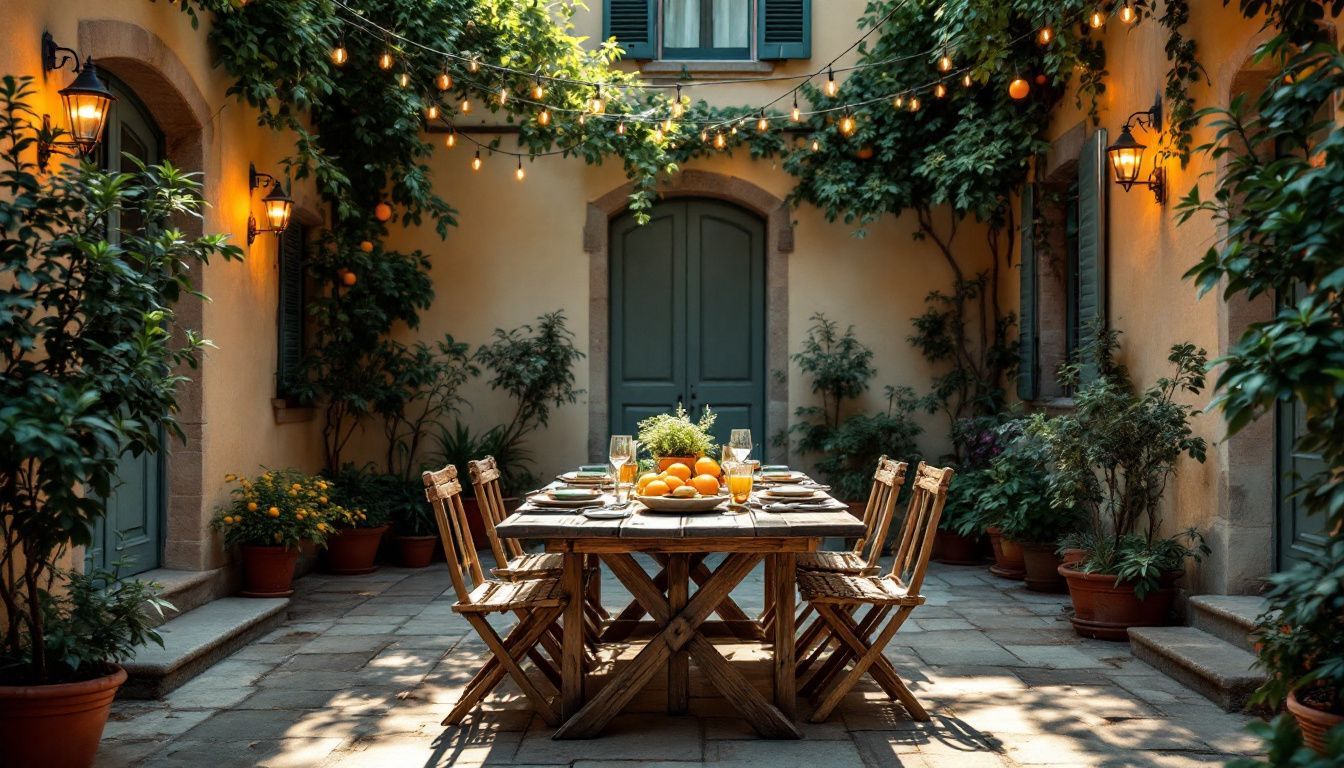
Italian culture and Lifestyle is rich and vibrant. Family, food, and art form its core. Enjoying fresh meals brings people together. The Italian way of life values community time and connection.
Embrace these joys in your own life.
Explore more about Italy’s beautiful places, like Sicily or Valpolicella. Try cooking traditional dishes like pasta or paella with friends. Celebrate Christian holidays and local festivals, such as Carnival or Befana and enjoy Italian culture and Lifestyle.
Each experience offers a taste of what makes Italy special.
Take this chance to reflect on how you can add a bit of Italy to your daily routine. Whether it’s sharing meals with family or savoring coffee at leisure, small changes can lead to greater happiness.
Let the spirit of Italian culture and Lifestyle inspire you today!
FAQs
1. What is the Italian Culture and Lifestyle like?
The Italian lifestyle revolves around family and friends, with a strong emphasis on enjoying meals together. This includes indulging in the Mediterranean diet, which features plenty of pastas and other traditional Italian dishes.
2. How does the culture of Italy influence its cuisine?
Italian cuisine is deeply rooted in the culture of Italy. From Sicily to Northern Italy, each region has unique dishes that reflect their local traditions and history. The ethnic Italians’ love for food makes every meal an important event.
3. What are some popular foods in Italy?
Popular Italian foods include various types of pasta such as macaroni, pilaf, and many others found in both northern Italian cuisine and southern cuisine. Additionally, Valpolicella wine from Northern Italy or Barbera from Southern region are also widely enjoyed by the Italian population.
4. Is breakfast considered the most important meal of the day in Italy?
Contrary to common belief elsewhere, an Italian breakfast typically isn’t seen as ‘the most important meal’. It’s often light – perhaps just a coffee served by your friendly waiter at your favorite café!
5. Can you tell me more about regional differences within Italy?
Sure! For instance, Piana degli Albanesi – a small town near Sicily inhabited by Italo-Albanians – offers unique cultural experiences different from mainstream Italian culture… think paella instead of pasta!
6. Can you share any special customs related to Christian holidays celebrated in Italy?
Yes! Carnival is one major celebration before Lent begins… Think masks and parades! Then there’s La Befana – akin to our Santa Claus but it’s an old woman who delivers gifts on Epiphany eve… And let’s not forget Easter celebrations that fill churches across all regions!
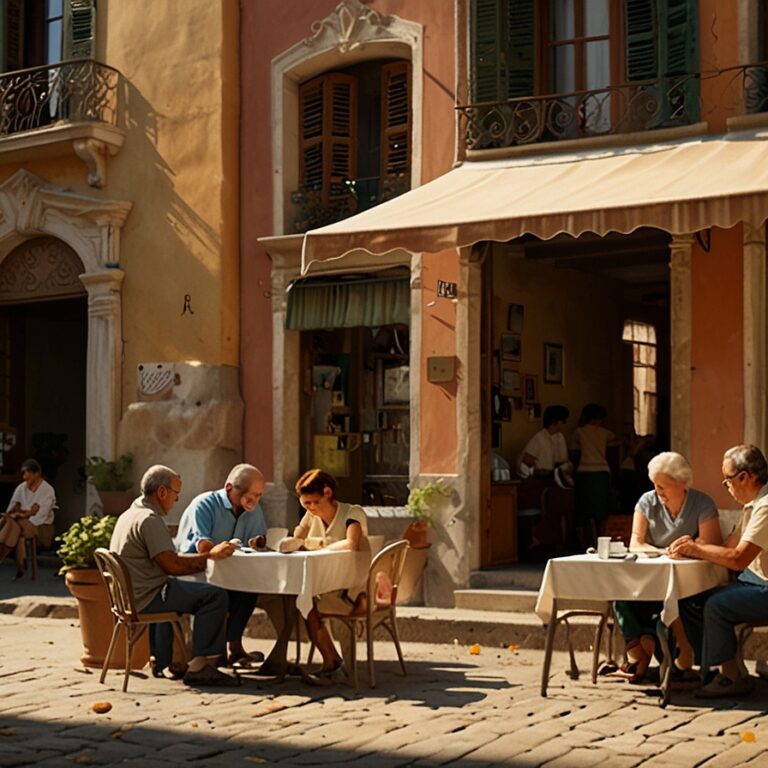
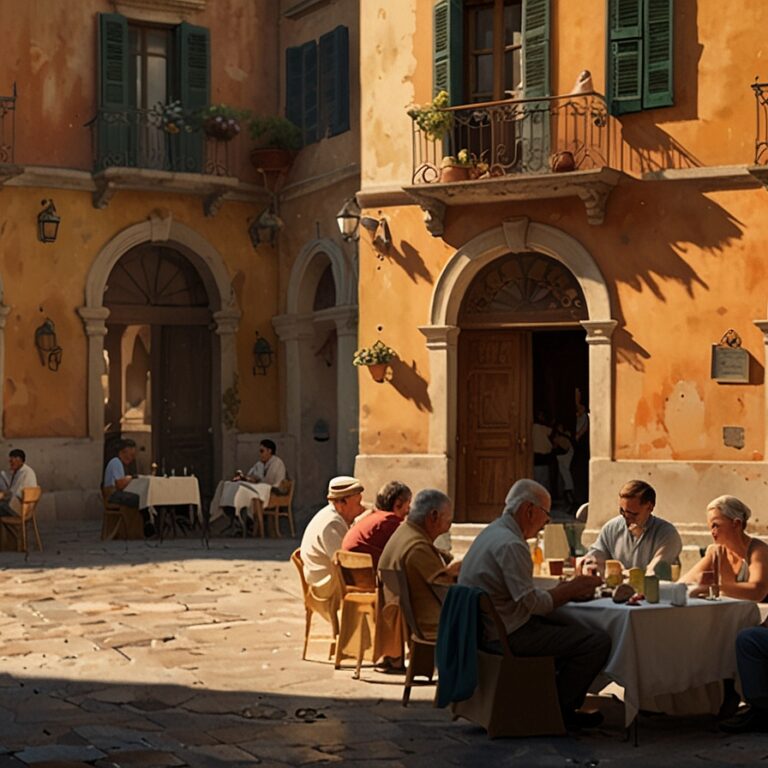
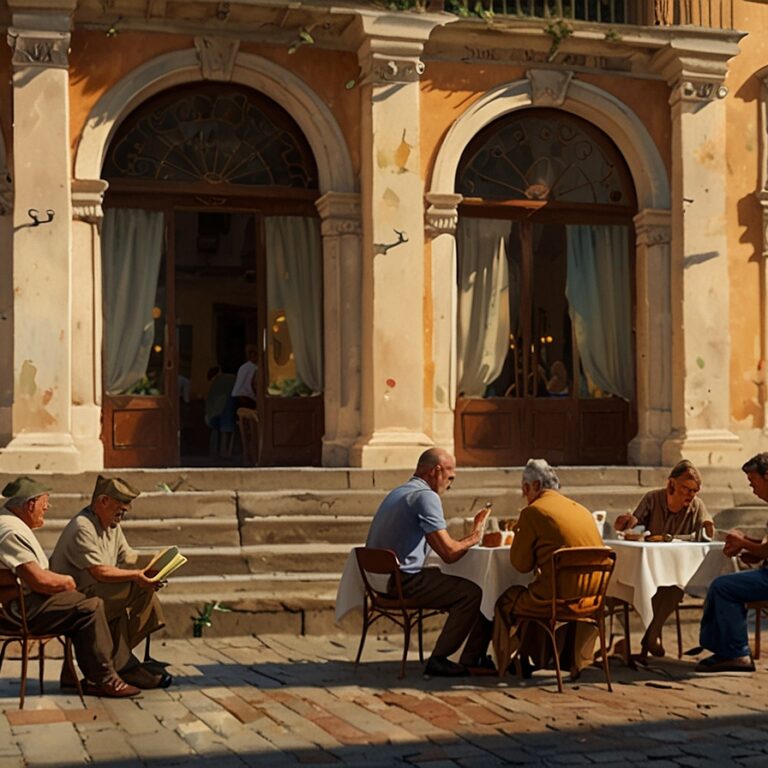
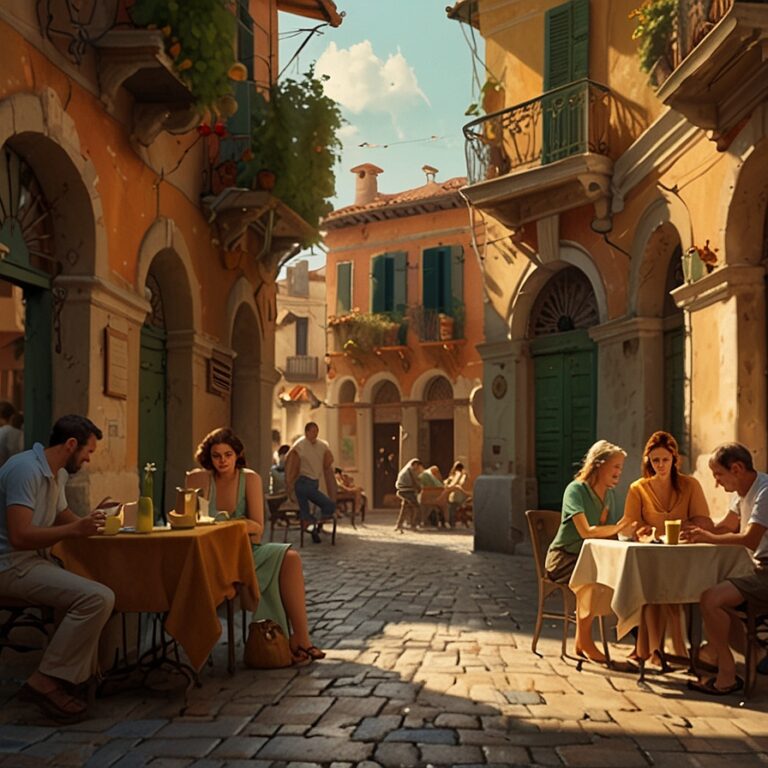
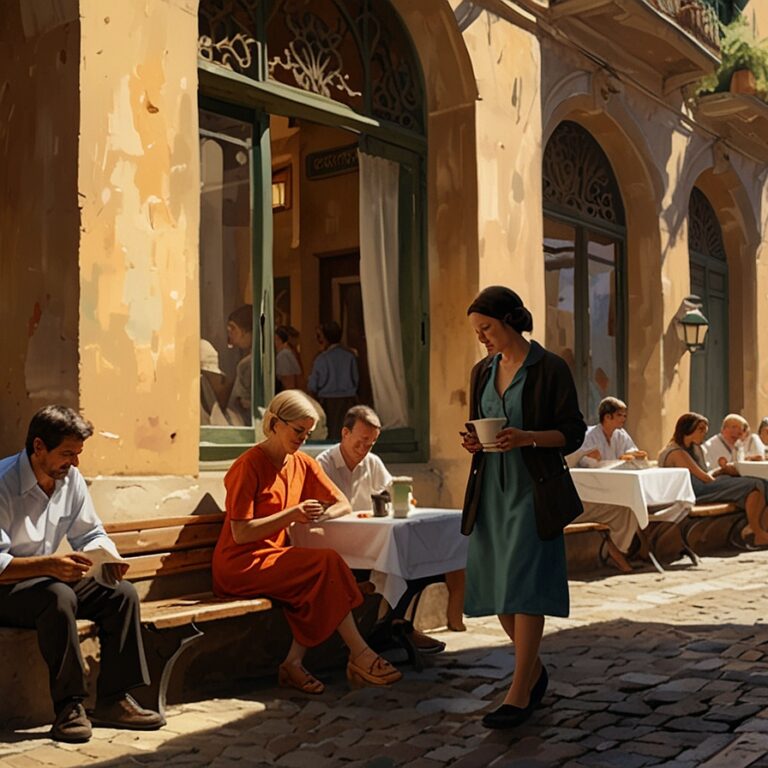
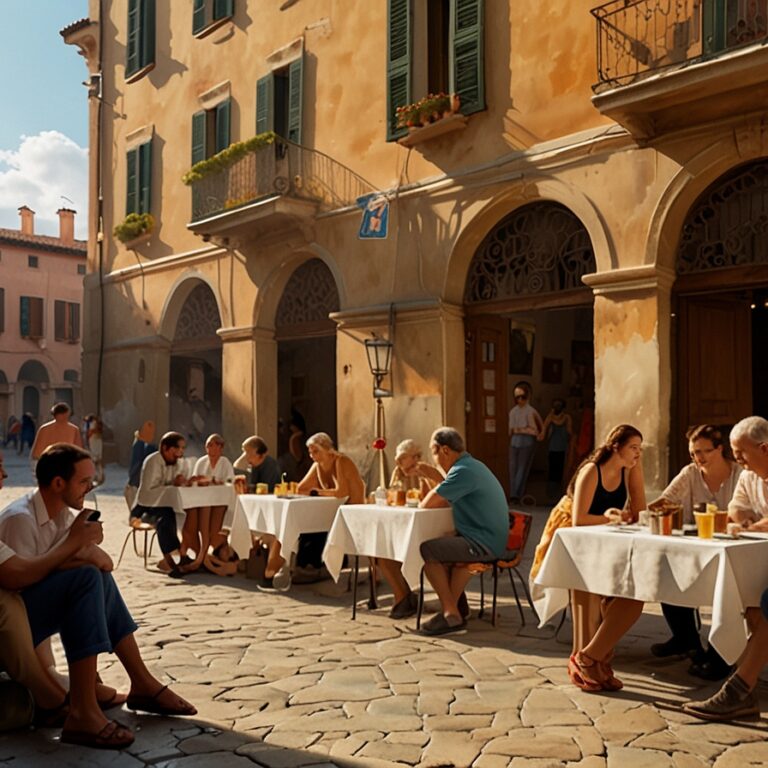
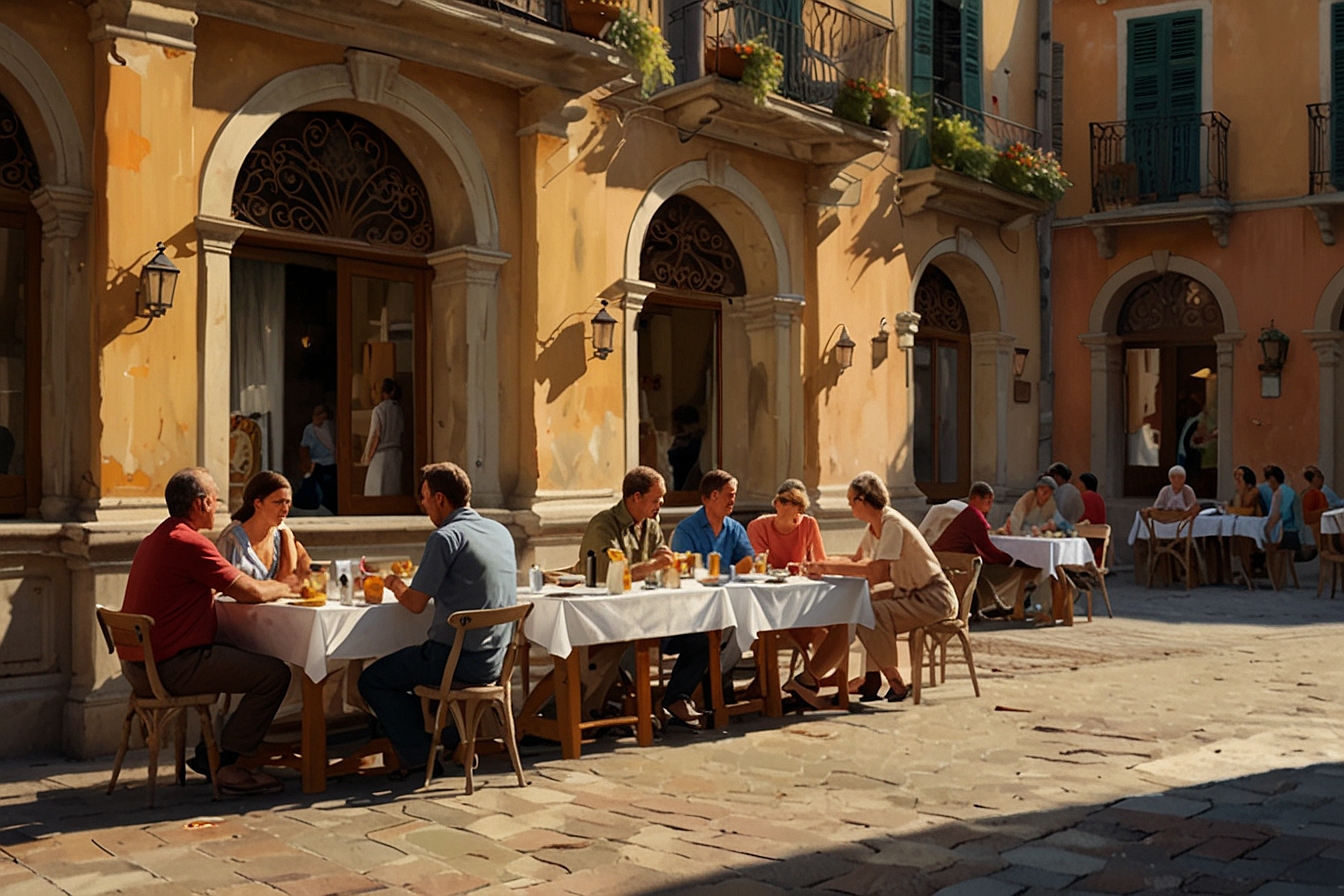
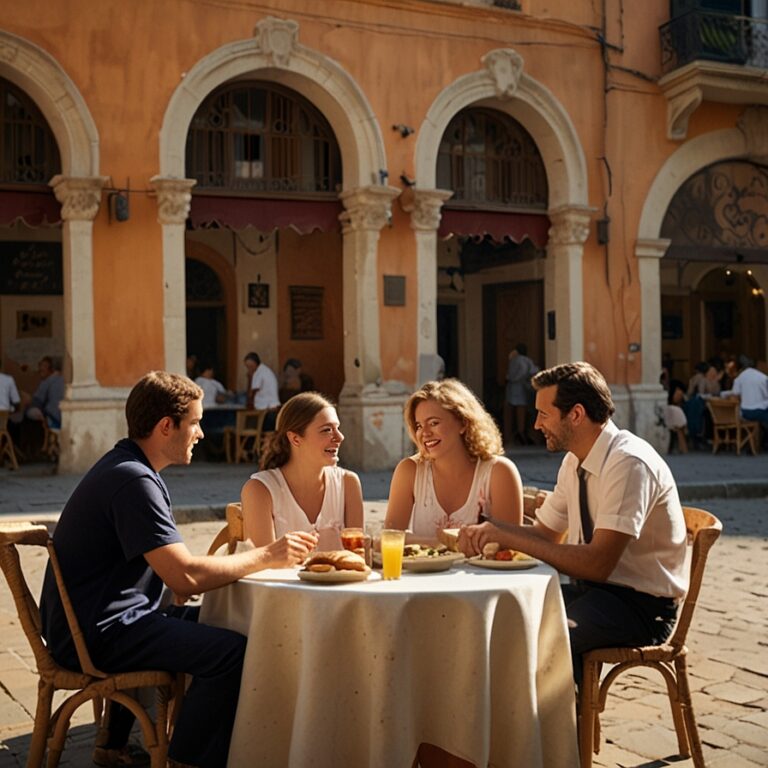
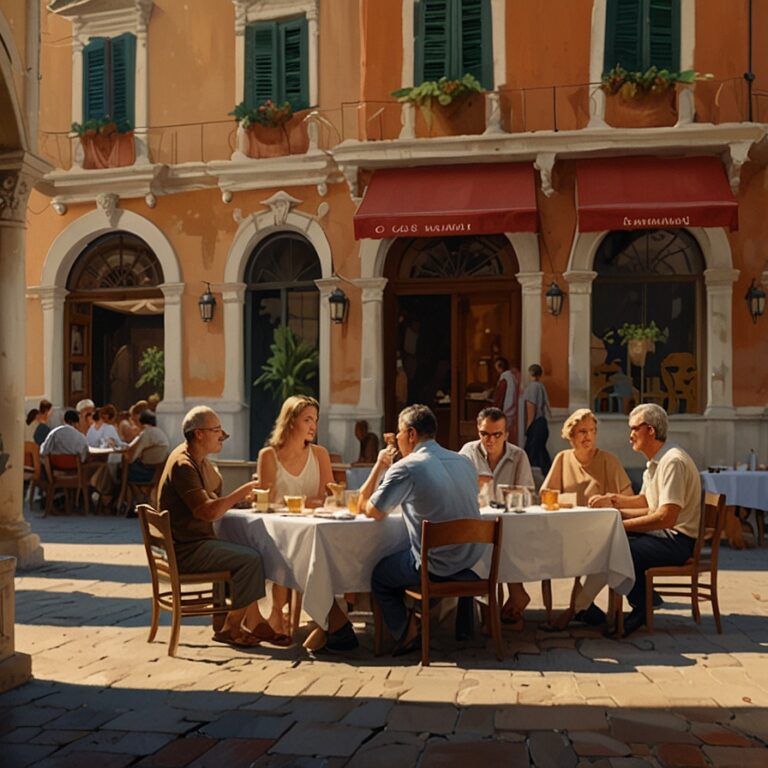
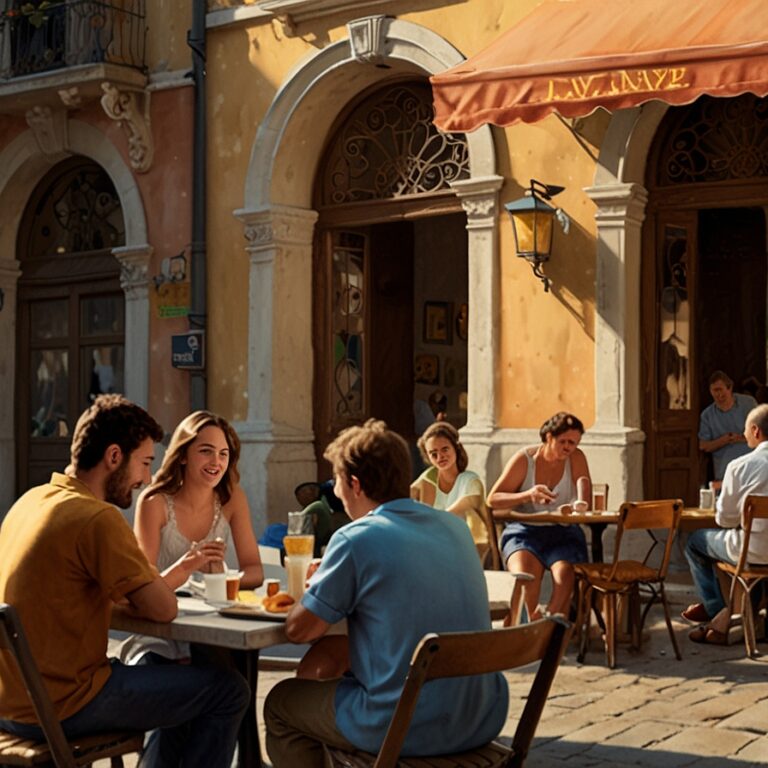
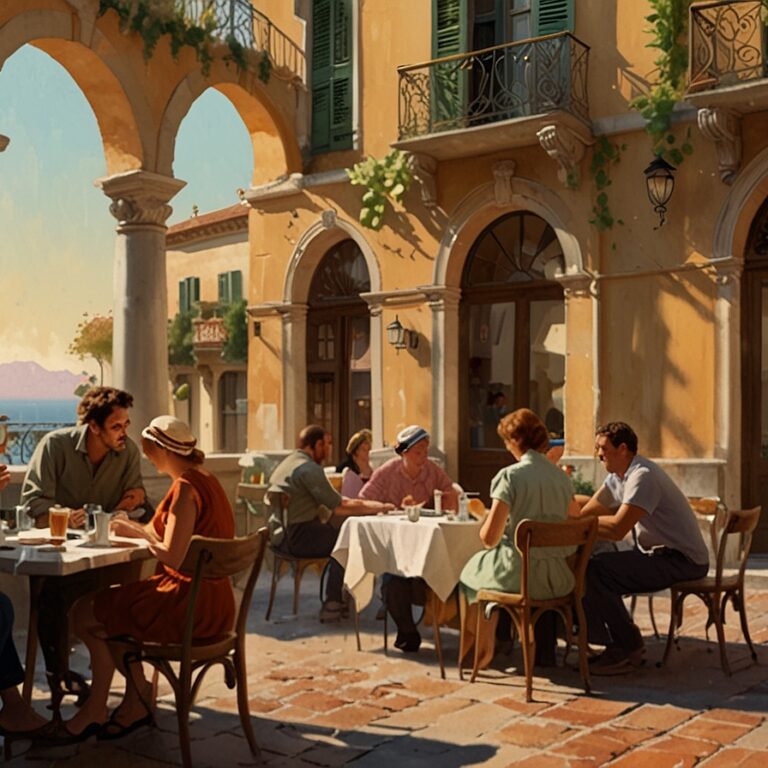
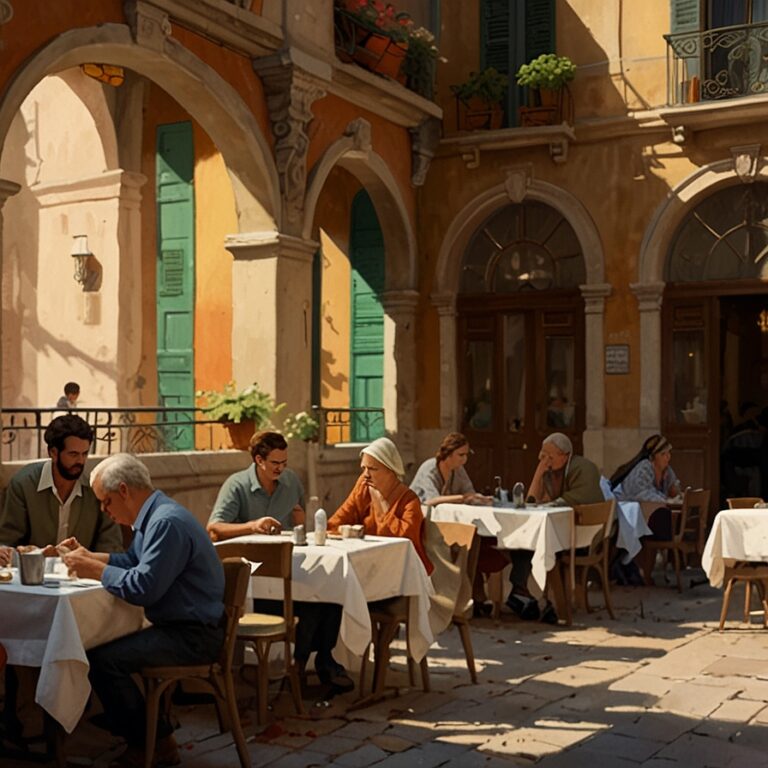


 Cart is empty
Cart is empty 







